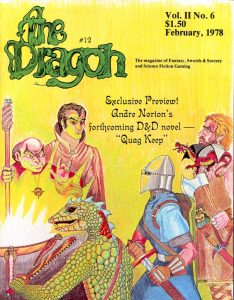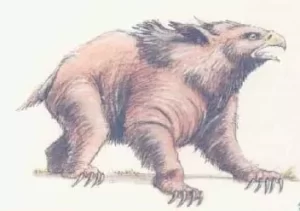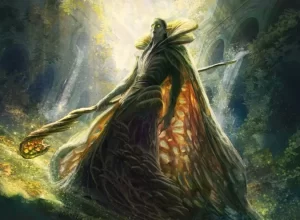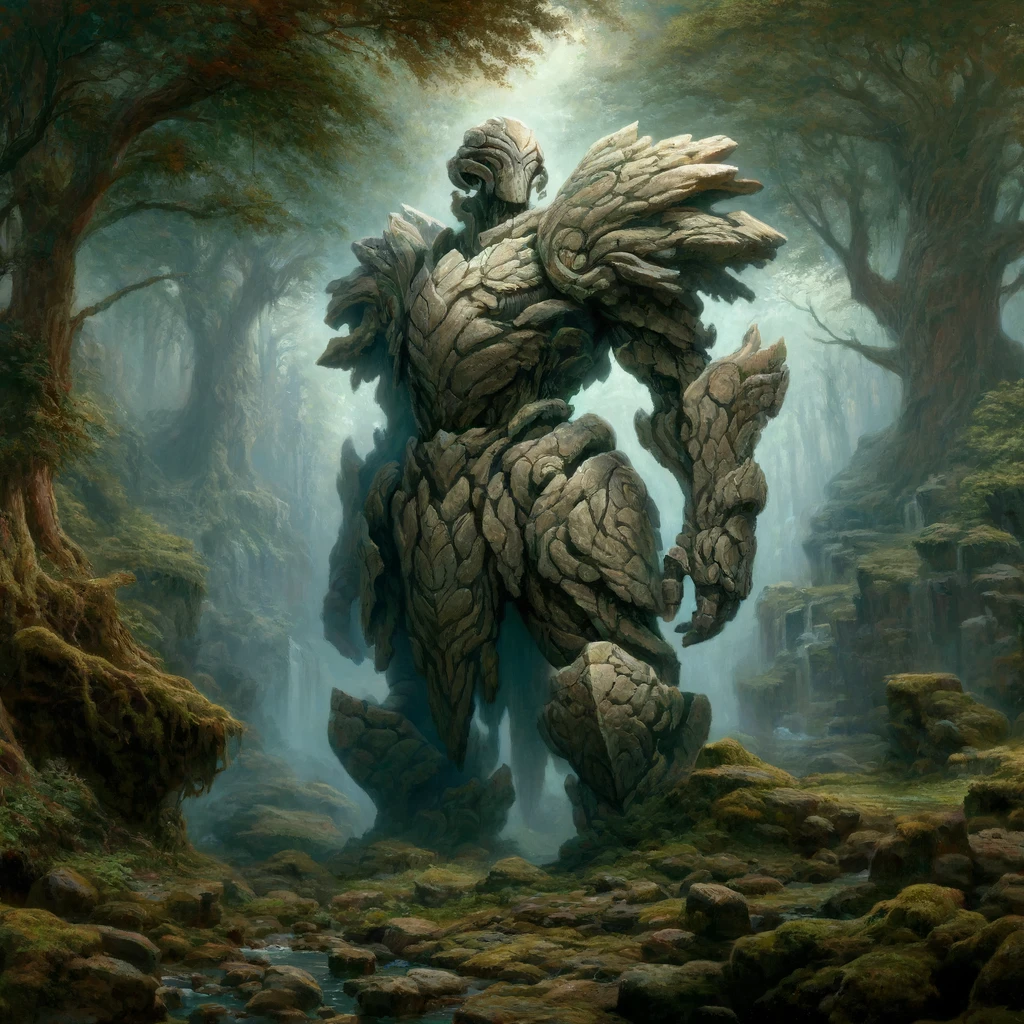
Introduction: The Essence of the Elements
In the rich tapestry of Dungeons & Dragons, elementals are as fundamental to the planes' architecture as the bricks and mortar are to a castle's walls. From the whirlwinds of the Air Plane to the infernos of the Fire Plane, elementals embody the raw energies of their elemental realms. These beings, ranging from the stoic myrmidons to the mercurial standard elementals, play pivotal roles in the cosmology of D&D, acting as both protectors and challengers within their domains. This article explores the deep lore, mystical summoning rituals, and the critical roles these elemental forces play across various campaign settings.
In the realm of Pathfinder 2e, elementals are similarly integral to the fabric of its multiverse, embodying the primal forces of nature. Like their counterparts in Dungeons & Dragons, Pathfinder's elementals arise from the four classical elements-earth, water, air, and fire-each with distinct abilities and temperaments reflecting their elemental origins. Pathfinder 2e enhances the roles of these elementals through its unique mechanics, such as the Summon Elemental spell, which allows casters to call upon these beings with precision, choosing from various sizes and powers that scale with the caster's level. This system not only emphasizes the strategic use of elementals in combat and storytelling but also enriches the world-building, presenting elementals as both sentient beings with their own cultures and as tools that can be wielded by those with the knowledge to do so. Thus, Pathfinder 2e continues to explore and expand the elemental narrative, offering players diverse ways to interact with these powerful creatures within the game's richly detailed and ever-evolving campaign settings.
The Nature of Elementals
Elementals are the personification of the natural forces of the universe. They are not merely creatures but incarnations of elemental energies-fire, water, air, and earth. Each type embodies the essential qualities of its element, from the searing rage of a Fire Elemental to the grounded solemnity of an Earth Elemental. Their appearance and behavior reflect their elemental planes' intrinsic nature, making them unique among the beings adventurers might encounter.
In Pathfinder 2e, the depiction of elementals extends these concepts further, showcasing a greater variety of elemental types and subtypes that illustrate the complexity of elemental forces. Beyond the classical quartet of fire, water, air, and earth, the game introduces rare and powerful elementals such as those of wood, ice, and magma, each bringing unique abilities and strategic options to the gameplay. This diversity allows for a richer interaction with the elemental planes, reflecting the dynamic and sometimes unpredictable nature of these forces. Pathfinder 2e's detailed approach to elementals emphasizes their potential as allies, adversaries, or forces of nature that must be approached with both awe and caution, providing players with a nuanced perspective on the power and diversity of the elements they wield or confront.

Summoning and Binding: The Arcane Arts
The summoning of elementals is a complex art, known to a select few arcane practitioners. Wizards, sorcerers, and certain clerics and druids with deep connections to the natural world can call upon these beings through elaborate rituals often involving specific symbols, meticulously prepared environments, and rare components aligned with the elementals' nature.
Once summoned, binding an elemental requires precision and control, as these beings resist being pulled from their native planes. The magic circle, a potent spell, is frequently employed, creating a boundary of energy that traps the elemental. This process can be perilous, as even a minor error in the ritual can lead to catastrophic releases of elemental force.
In Pathfinder 2e, summoning elementals is enriched by the game's versatile and granular spellcasting system. The game introduces a variety of spells specific to each type of elemental, allowing for more customized summoning. These spells range from simple summons that bring forth minor elementals to complex rituals that can conjure formidable beings capable of changing the tide of battle. Pathfinder's focus on spell tiers and precise control over spell effects means that casters must choose carefully the level of power they wish to wield, balancing the risk with the potential reward of summoning more powerful elementals.
Furthermore, in Pathfinder 2e, the relationship between the summoner and the summoned elemental can be more dynamic than in D&D. Once summoned, the elementals may negotiate or demand tasks in exchange for their service, reflecting their intelligence and autonomy. This interaction adds a layer of role-playing potential that extends beyond mere combat utility. The game also introduces the concept of planar binding, a higher-level spell that allows for longer or even permanent service, but with greater risks and ethical implications. This nuanced approach offers players and Game Masters opportunities to explore complex narratives involving elemental loyalties, planar politics, and the moral dilemmas of binding sentient beings.
The Role of Myrmidons
Elemental myrmidons, elite warriors among the elementals, serve as the guardians of their realms. Created by powerful magic and bound to the will of the summoner, myrmidons are encased in armor that enhances their inherent elemental properties. An Earth Myrmidon, for example, might wear armor that resembles overlapping stone plates, while a Fire Myrmidon's armor appears as flowing magma.
These myrmidons are often summoned to guard sacred sites or treasures within the elemental planes or to serve as soldiers in battles involving the gods or other planar entities. Their loyalty is absolute, forged by the magic that created them, making them reliable, albeit dangerous, allies in combat.
In Pathfinder 2e, elemental myrmidons are reimagined through the game's extensive bestiary, which introduces various elemental guardians with diverse abilities and roles. These beings can be summoned using advanced conjuration magic that is more nuanced than the traditional summoning spells found in other systems. Pathfinder 2e allows for a wider range of customization and control over the summoned creatures, providing options to summon different versions of myrmidons, each tailored to specific combat roles or tasks. For instance, a Water Myrmidon might be summoned specifically for its ability to control aquatic environments or to harness the power of water for healing, reflecting the versatile nature of elemental magic in Pathfinder.
In Pathfinder 2e, the concept of elemental myrmidons is indeed expanded through the game's extensive bestiary, which introduces a variety of elemental guardians each imbued with unique traits and powers reflective of their elemental natures. Unlike the more traditional armor-clad myrmidons of Dungeons & Dragons, Pathfinder's elementals often embody their elements in more fluid and dynamic forms. For example, the Azer, while not strictly termed a myrmidon in Pathfinder, serves a similar role as a guardian forged from fire and metal, often found in the Plane of Fire where they craft weapons and armor. In the Plane of Air, creatures like the Invisible Stalker are used by powerful spellcasters to hunt and guard, embodying the relentless and unseen forces of the air. On the Plane of Earth, creatures such as the Xorn, with their unique three-legged form and affinity for precious metals, guard the treasures of the deep earth. Each of these creatures can be seen as a form of myrmidon, serving as protectors and enforcers of the natural laws of their respective elements within the expansive lore of Pathfinder.
Moreover, Pathfinder 2e expands on the concept of myrmidons by integrating them into the broader lore of the game, often involving them in the intricate politics of the elemental planes. In this RPG, myrmidons may act not only as guardians or soldiers but also as envoys or representatives in diplomatic affairs between the planes. Their absolute loyalty, while still a prominent feature, can also be a narrative element that explores themes of freedom, servitude, and the ethics of binding sentient elemental forces. This approach allows players and Game Masters to engage with elementals in a context that goes beyond mere combat encounters, encouraging deeper storytelling and character development within the rich, multilayered universe of Pathfinder 2e.

Elementals in the Campaigns
In the context of a D&D campaign, elementals can serve a myriad of roles. They may be guardians of ancient elemental temples or relics, challenges for adventurers to overcome, or allies summoned to aid in battles against formidable foes. The unpredictability of elementals, especially when summoned incorrectly, adds an element of risk and excitement to any adventure.
Adventurers might encounter a Water Elemental guarding a submerged palace's treasure or a Fire Elemental unleashed as a weapon during a siege. The elemental planes themselves offer rich settings for adventures, where the environment is as much a character as any creature within it.
In Pathfinder 2e, the versatility of elementals is taken to new heights, leveraging the game's robust mechanics for deeper interaction and integration into campaigns. Elementals in Pathfinder 2e can be more than mere guardians or adversaries; they often serve as complex characters with their own motivations and backstories. For instance, elementals might be bound by ancient pacts to protect specific locations or artifacts, adding layers of history and mystery to their roles. Players might need to negotiate or fulfill quests to gain the cooperation or overcome the opposition of such beings, rather than resorting to combat alone.
Furthermore, the elemental planes in Pathfinder 2e are depicted with intricate details that make them vibrant and dynamic settings for adventures. Each plane is a fully realized world, with its own cultures, inhabitants, and conflicts. Adventurers might find themselves in the middle of a political conflict in the Plane of Water, navigating through the ever-changing and treacherous coral palaces, or they could be trying to prevent an ecological disaster on the Plane of Earth, where mining operations by greedy earth elementals threaten to destabilize entire regions. These scenarios make the elemental planes not just places to visit, but worlds to be explored and influenced, where the adventurers' actions can have significant consequences.
Darker Aspects: Elementals as Antagonists
While often viewed as neutral forces, elementals can become formidable antagonists under certain circumstances. A Fire Elemental could ravage a forest kingdom under the control of a malevolent wizard, or an Air Elemental might be the furious spirit of a storm, decimating coastal towns. These scenarios provide Dungeon Masters with opportunities to craft complex narratives where elementals are not merely obstacles but integral to the story's unfolding drama.
In Pathfinder 2e, the potential for elementals to serve as antagonists is further enhanced by the game's detailed alignment and morality system. Elementals may not only be driven by external control, such as a wizard's spell, but can also act from their own emergent desires or alignments that make them more complex than mere forces of nature. For example, a Water Elemental might become a vengeful antagonist after its river home is polluted or its sacred waters desecrated. These elementals can pursue goals that are aligned with their nature but antagonistic to local populations or specific characters. Such motivations allow Game Masters in Pathfinder 2e to develop deeper, more engaging storylines where elementals embody significant thematic elements, such as revenge, protection of the natural world, or even chaotic disruption, making them multifaceted characters within the narrative rather than simple monsters.
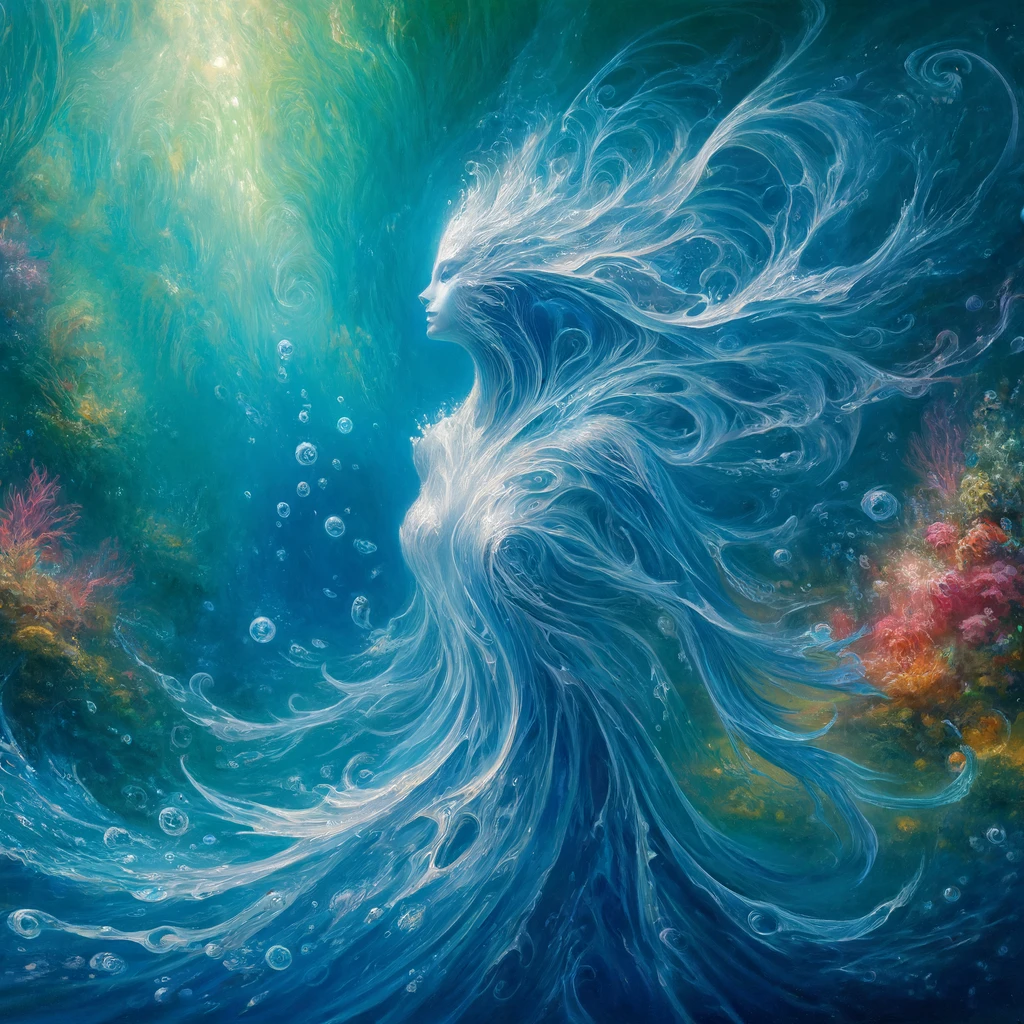
Elemental Echoes in the Multiverse
The lore of elementals in Dungeons & Dragons is a testament to the game's depth and its creators' imagination. These beings remind players and Dungeon Masters alike of the raw power and majesty of the natural world-even within the context of a fantastical universe. As guardians of the gateways between worlds, elementals challenge adventurers to rise above mere mortal concerns and engage with the fundamental forces of existence itself, making every encounter with them a potentially transformative experience.
Incorporating elementals into your D&D campaigns brings not only a touch of elemental chaos but also a profound connection to the energies that weave through the multiverse, ensuring that the adventure is as boundless as the planes themselves.
In Pathfinder 2e, the lore of elementals is similarly deep and imaginative, enriched by the game's dedication to creating a diverse and interactive multiverse. Elementals in Pathfinder are not just manifestations of physical forces but are often imbued with spiritual and emotional aspects that reflect the broader themes of their respective planes. For instance, a Fire Elemental might not only represent the destructive power of flame but also the passion and fleeting nature of life itself. This philosophical layer adds depth to the role-playing experience, encouraging players to contemplate the broader implications of their interactions with these primal beings. As guardians or adversaries, these elementals challenge the adventurers not only physically but ethically and spiritually, making each encounter a complex interplay of power, morality, and survival.
Expanding on their role in the multiverse, Pathfinder 2e allows elementals to be more than mere components of a campaign-they can drive entire story arcs or serve as the heart of complex ecosystems within the game's richly detailed worlds. The game mechanics support this integration by offering spells, feats, and systems that allow for nuanced interactions with elementals. Players might negotiate, command, or even merge with elemental forces, reflecting the intricate connections between the material planes and the elemental realms. This deep integration ensures that adventures in Pathfinder are not only thrilling but also meaningful, as players navigate the delicate balance of power that elementals represent in the fabric of the universe, illustrating the game's commitment to a living, breathing world where actions have significant consequences.




